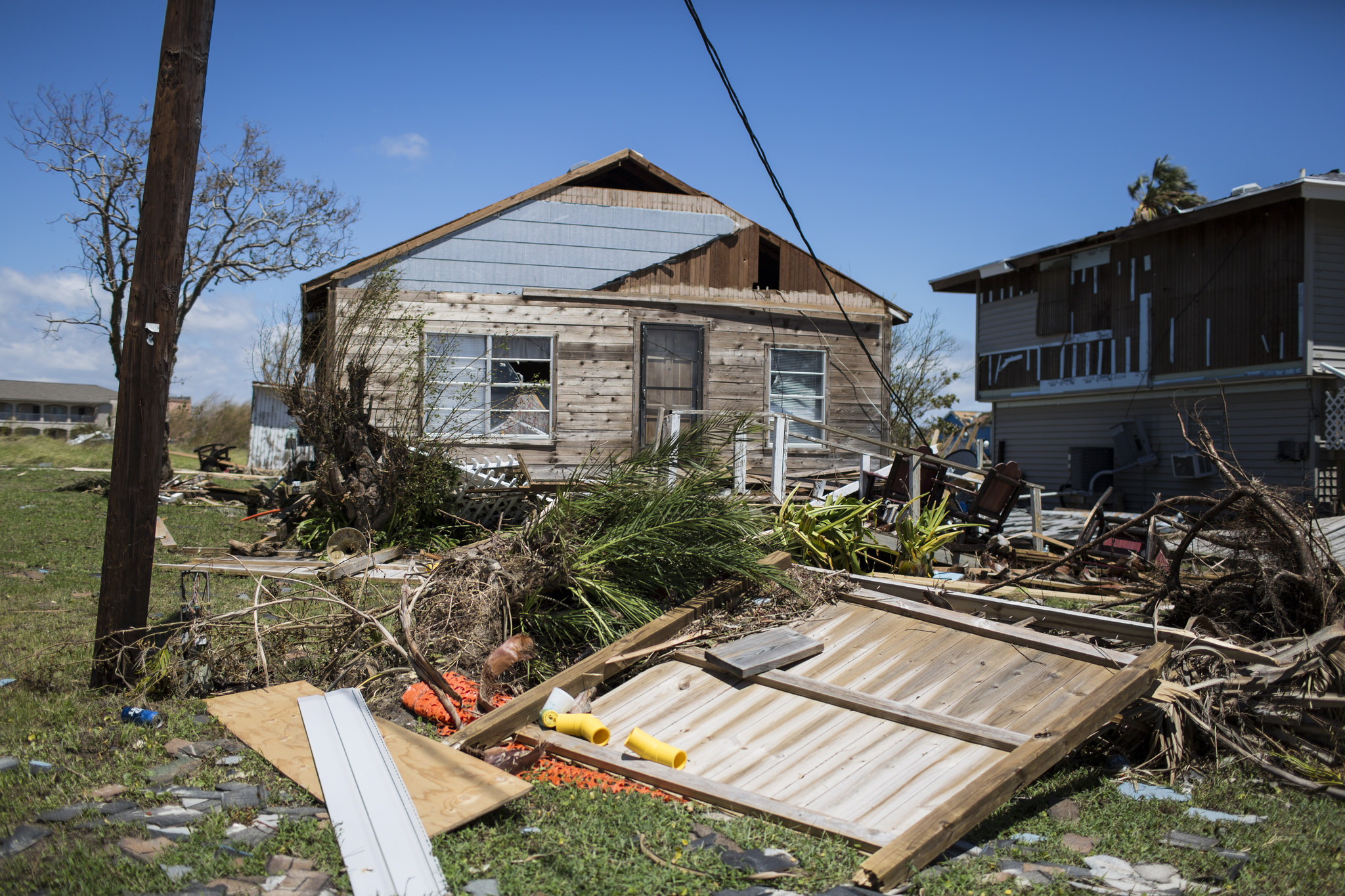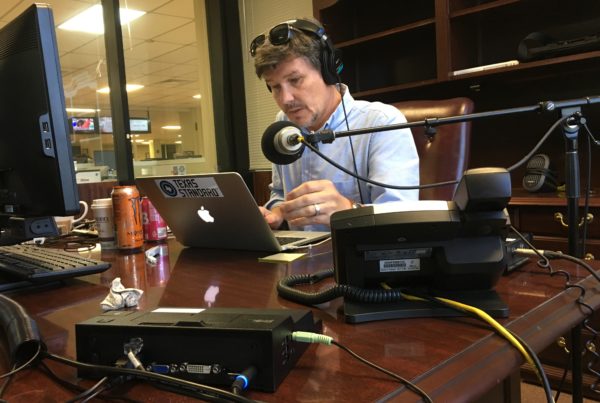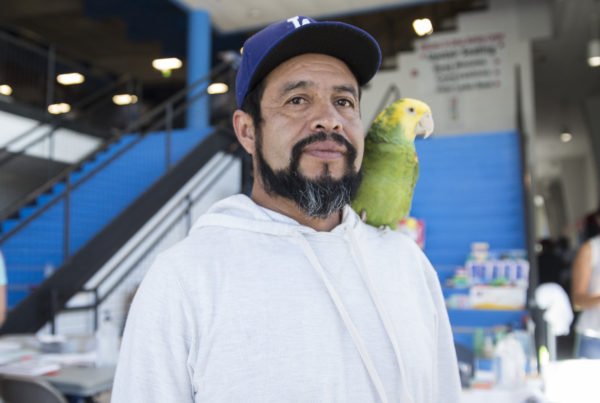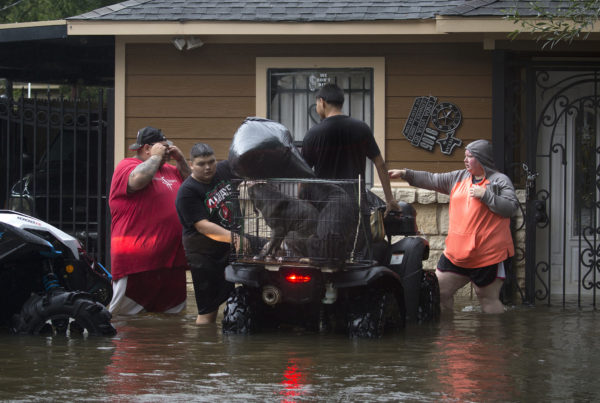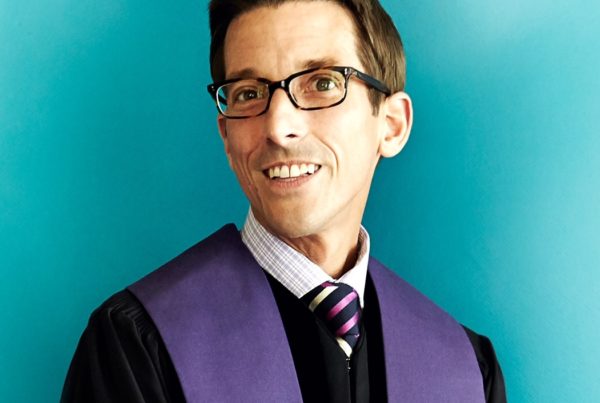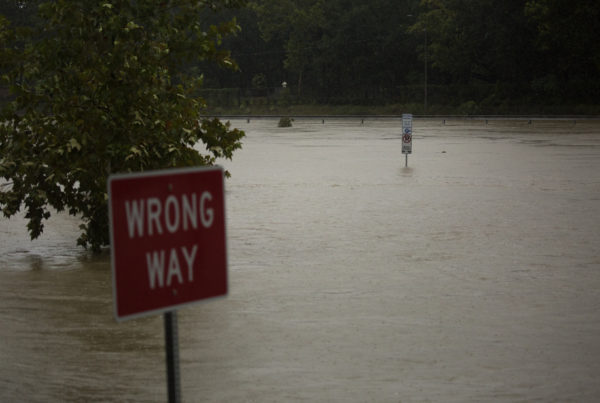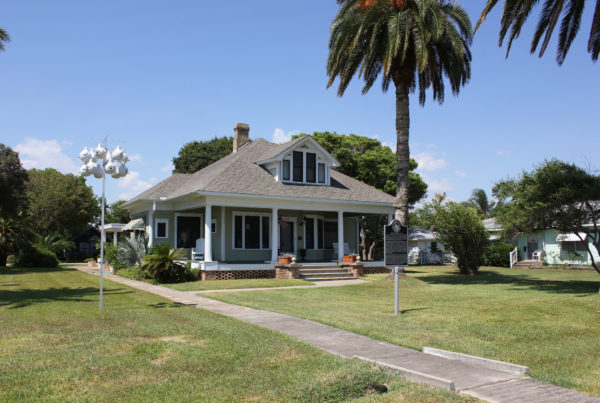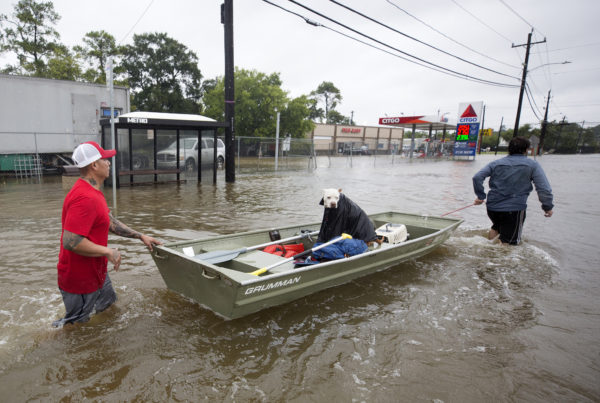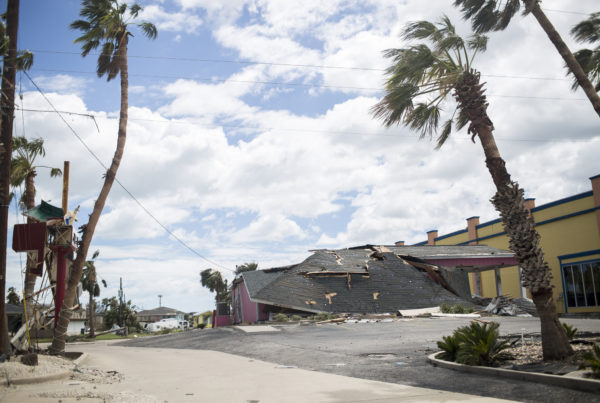Texas Standard is on the road, the main road that connects the coastal bend to the rest of Texas. To our left, in the direction of Houston, a wall of orange-grey clouds, thick and foreboding, hugs the horizon. But otherwise, there are few reminders of what happened just down the road.
We pass an abandoned sedan with the word “Help” scrawled on the windshield, the driver’s door still open, flashers faintly blinking, but no one is there. Several massive, green highway signs are folded in on themselves — a reminder we’re heading in the right direction.
Gassing up at a truck stop, we see fire crews from Abilene, convoys of utility trucks with out-of-state plates, and pickups in line for the pumps. Freddie Anthony is on his way to the coast; he and his wife wear matching Marine Corps caps. They had to abandon their retirement home on the coast a few days ago. This will be a homecoming of sorts.
“I tell you what means something to me: I called FEMA on Sunday, and I was talking to somebody in about five minutes…and she even asked me for my account number and where I want the check mailed, and I hadn’t even seen my damage,” Anthony says.
Hurricane Harvey was a category 4 storm when it made landfall just a few miles from Corpus Christi, where we’re broadcasting from today. The destruction in places like Rockport and Portland border on apocalyptic. But the harbor bridge here still stands. And amid the tangle of blown-out signs and downed power poles and trees, and stoplights that don’t work, and traffic jams everywhere, there are smiles — so many, it’s impossible not to notice. The recovery phase is already well underway.
At a retirement community, hundreds of seniors who’d been hustled out of harm’s way days ago are welcomed back with balloons, cheers and a few tears from family members. Adela Moreno, 87, and her husband, were two of the seniors who came back.
“I had to trust in the almighty God, that’s the way…Corpus Christi, it has a name and I trust in that,” Moreno says.
Moreno’s son Joseph, who was at the senior-center welcome, says both of his parents, who are in their 80s, evacuated to Austin. His father also has some serious health issues.
“He’s paralyzed because of strokes…he’s on a feeding tube and we have to rotate him every two hours,” Joseph says.
Joseph says his family has already been through a lot in the last year, including his brother being murdered.
“When anything devastat[ing] like this happens, I always turn to God and say, You know what, we’re lucky to have our health. We just pray for all those people that are in turmoil right now,” Joseph says.
Around the corner from the senior living center, a group of about 10 high school students are standing outside a pizza joint taking donations of diapers, clothes, toilet paper and bottled water. Two teenage girls say they feel their region of the Gulf Coast has been somewhat forgotten by the mainstream media, with Houston getting all the attention.
The truth is, a lot of folks here haven’t seen the pictures and news coverage of the devastating flooding just northeast of here in Houston. That’s because a lot of people still don’t have television, electricity and internet service. Besides, there’s lots of work to do outside to get back to normal…and still many unanswered questions.
Professor Philip Tissot joined us at Corpus Christi’s massive seawall — built here after one of the many killer storms that have thrashed the coast over the years. He studies hurricanes and climate at Texas A&M Corpus Christi.
Tissot says Corpus Christi’s marina has a storied past when it comes to hurricanes. A deadly hurricane in 1919 killed over 280 people. But it also opened the door to modern hurricane science and monitoring. Robert Simpson witnessed the hurricane’s destruction from the safety of the courthouse, and later became the first director of the National Hurricane Center and co-developed the hurricane classification system we now call the Saffir-Simpson scale.
“This is sort of ground zero for hurricane history, and also it’s a bit of pride for Corpus Christi,” Tissot says.
Tissot says it’s difficult to link a single hurricane to climate change, but that doesn’t mean that we should take hurricanes any less seriously.
“We have a long string of events along the coast; we will continue to have hurricane[s] but we have more population, we have more expensive infrastructure, and so this is a reminder that we have to build better, smarter, be more resilient, such that this does not bankrupt us,” Tissot says.
Written by Caroline Covington.


